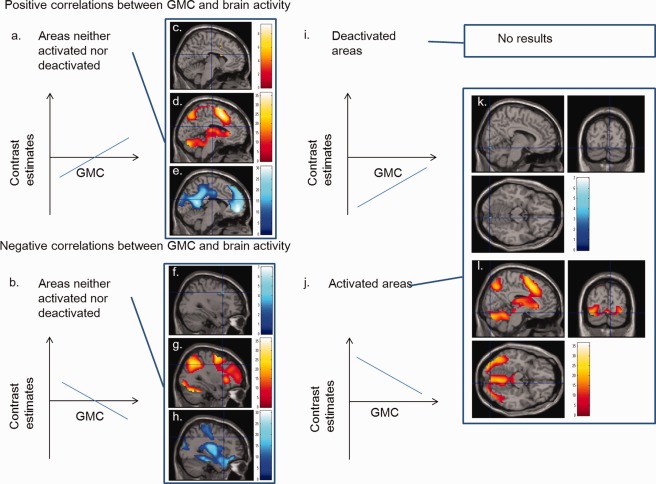Figure 3.

Minor patterns of correlations between GMC and brain activity. (a, b, i, j) schematics of correlations between GMC and brain activity. (a, i) Positive correlations in (a) areas that were neither activated nor deactivated and (i) deactivated areas (“the greater the GMC, the smaller the task‐related activation decrease). (b, j) Negative correlations in (b) areas that were neither activated nor deactivated and (j) activated areas (“the greater the GMC, the smaller the task‐related activation increase). (c) A region with a significant positive correlation between brain activity during the 2‐back task and GMC in an area close to the thalamus (P < 0.05, corrected for voxel‐level FWE), which was not activated nor deactivated during the 2‐back task. The regions with correlation were overlaid on a single subject T 1 image of SPM5. (f, k) Regions with significant negative correlations between brain activity during the 2‐back task and GMC (P < 0.05, corrected for voxel‐level FWE) (f) in an area of the right middle frontal gyrus, which was neither activated nor deactivated during the task and (k) in an area of the lingual gyrus, which was activated during the 2‐back task. (d, g, l) Regions that were activated during the 2‐back task are displayed at a height threshold of 0.05, corrected for voxel‐level FWE. (e, h) Regions that were deactivated during the 2‐back task are displayed at a height threshold of 0.05, corrected for voxel‐level FWE.
